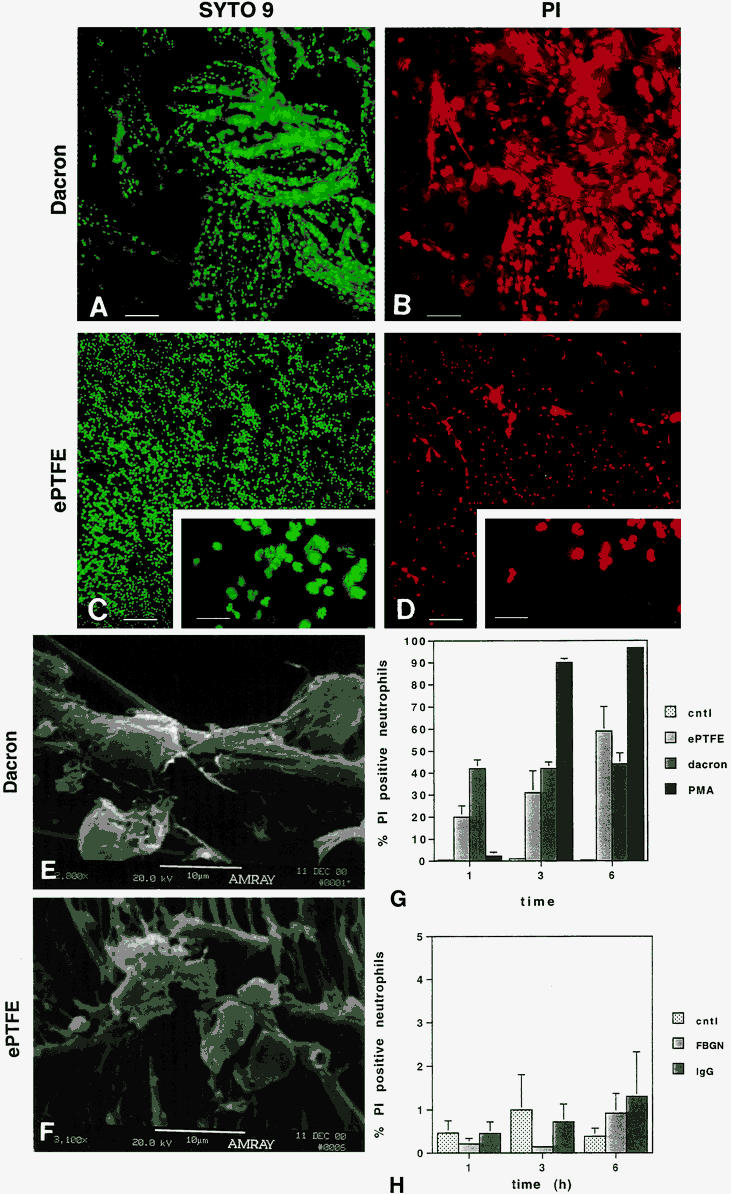
Figure 1. Neutrophils adherent to expanded polytetrafluoroethylene (ePTFE) and Dacron exhibit a time-dependent increase in cell death as determined by staining with propidium iodide (PI). Neutrophils were plated onto polystyrene plates prelined with Dacron (A, B) or ePTFE (C, D). At 1, 3, and 6 hours, neutrophils were stained with a mix of SYTO 9 and PI. Dead cells fluoresce red; live cells fluoresce green. Representative images of SYTO 9-stained (A, C) and PI-stained (B, D) Dacron- and ePTFE-adherent neutrophils at 6 hours are shown. Bar in A–D = 100 μm; bar in inserts in C and D = 30 μm. The morphology of Dacron- and ePTFE-adherent neutrophils was evaluated by scanning electron microscopy. Fully spread neutrophils were seen on both Dacron (E) and ePTFE (F). To quantify the percentage of PI-positive neutrophils relative to the total cell population (PI + SYTO 9 stained cells), neutrophils were plated onto wells precoated with fetal bovine serum (FBS; control), fibrinogen (FBGN), or immunoglobin (IgG) or prelined with ePTFE or Dacron (G, H). As a positive control, neutrophils plated onto a subset of control wells were treated with 12-myristate 13-acetate (phorbol ester; PMA) at the time of plating. At 1, 3, and 6 hours, neutrophils were stained with SYTO 9 and PI. Fluorescent cells in random microscopic fields were counted using the NIH image program, and the percentage of PI-positive cells relative to the total neutrophil population was determined. Data are expressed as mean ± SEM from seven independent experiments.
